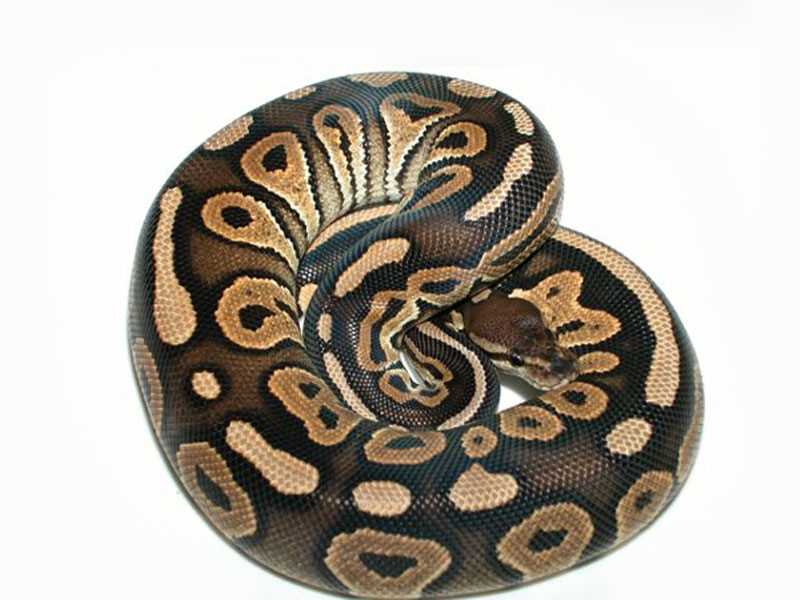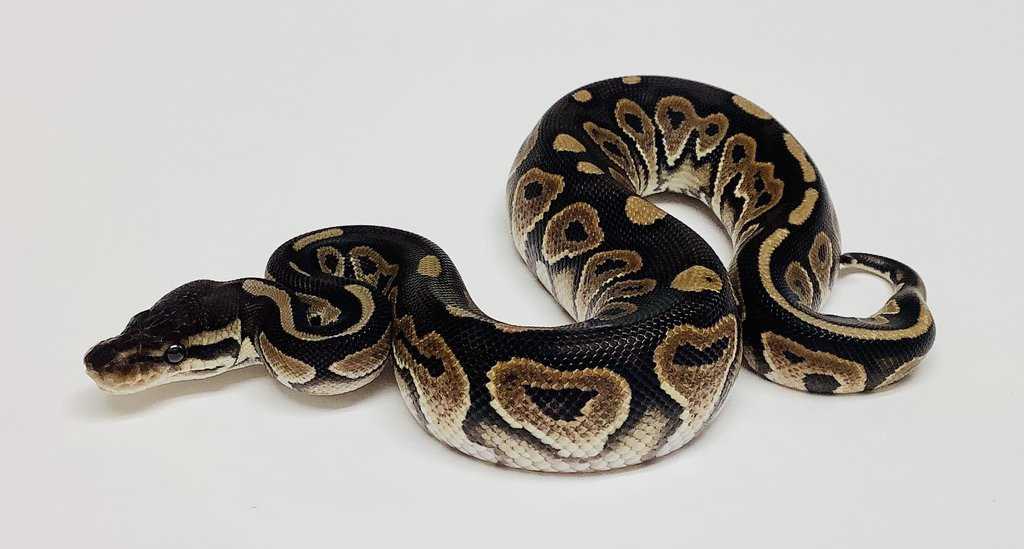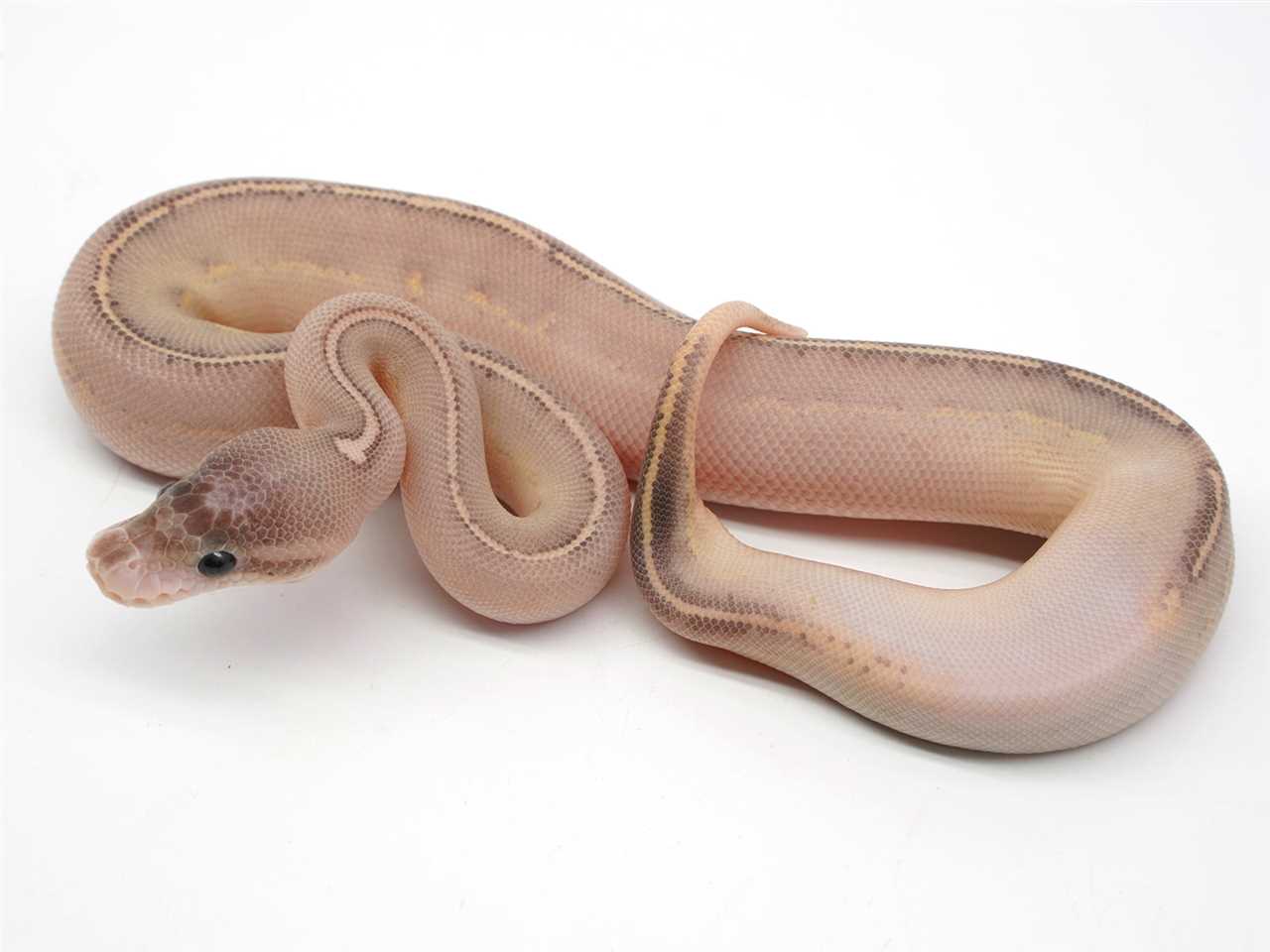The Cinnamon Ball Python showcases a beautiful array of earthy hues, including shades of brown, tan, and rich cinnamon. Its scales are adorned with intricate patterns that create a mesmerizing display when the snake is in motion. With its striking appearance, this python morph is a true showstopper and is sure to be the center of attention in any reptile collection.
Aside from its captivating looks, the Cinnamon Ball Python also exhibits a calm and docile temperament, making it an excellent choice for snake enthusiasts of all experience levels. Whether you’re a beginner or a seasoned reptile keeper, this python morph is known for its friendly and easy-going nature, making it a joy to handle and interact with.
Characteristics of Cinnamon Ball Python Morph
The Cinnamon Ball Python is a unique snake morph that has become increasingly popular among reptile enthusiasts. Known for its striking coloration and docile nature, this snake makes an excellent pet for both beginners and experienced reptile keepers.
This snake morph is also known for its pattern. Unlike some other ball python morphs that have intricate patterns or markings, the Cinnamon Ball Python typically has a clean and smooth pattern. The scales are evenly distributed, creating a sleek and elegant look.
History of Cinnamon Ball Python Morph
The cinnamon ball python is an intriguing and unique python morph that is highly valued among reptile enthusiasts. Known for its beautiful coloration and striking patterns, this snake is a popular choice for those looking to add a new and captivating pet to their collection.
The cinnamon ball python is a result of selective breeding and genetic mutations. It gets its name from the rich cinnamon color that dominates its scales, giving it a warm and inviting appearance. This distinctive coloration sets it apart from other ball python morphs and makes it a highly sought-after species in the reptile community.
The origin of the cinnamon ball python can be traced back to the mid-1990s when breeders began noticing snakes with unique color patterns. These snakes were the result of breeding normal ball pythons with certain genetic mutations. Over time, breeders refined the genetic traits and selectively bred the offspring, resulting in the creation of the cinnamon ball python morph.
As a pet, the cinnamon ball python is known for its docile nature and ease of care. They are generally low-maintenance snakes, making them a great choice for both beginner and experienced reptile keepers. With the proper care and habitat, these snakes can live long and healthy lives, bringing joy and fascination to their owners.
Breeding Cinnamon Ball Python Morphs
When breeding cinnamon ball python morphs, it is crucial to have a male and female snake of breeding age. The snakes should be healthy, with no underlying medical conditions that may hinder the breeding process. It is also important to provide the snakes with appropriate housing and diet to ensure optimal breeding conditions.
The Breeding Process
Once you have a male and female cinnamon ball python morph at the appropriate age and health, you can begin the breeding process. It is advisable to introduce the male snake to the female’s enclosure rather than vice versa, as this helps minimize stress for the female.
After successful copulation, the female cinnamon ball python morph will undergo a gestation period of approximately 30 to 60 days. During this time, it is crucial to provide the female with optimal conditions, including a warm and secure nesting area.
Egg Laying and Incubation

Once the gestation period is complete, the female snake will lay a clutch of eggs. The number of eggs can vary, but it is common for a cinnamon ball python morph to lay between 4 to 6 eggs per clutch. The eggs should be carefully removed from the enclosure and placed in an incubator set to the appropriate temperature and humidity levels.
Caring for Hatchlings
Caring for Cinnamon Ball Python Morphs
Proper Diet and Feeding
One of the most important aspects of caring for cinnamon ball python morphs is ensuring they have a proper diet. These snakes are carnivorous and thrive on a diet of small rodents. It is recommended to feed them appropriately sized pre-killed or frozen-thawed rodents, such as mice or rats.
Providing the Right Habitat
Cinnamon ball python morphs require a suitable habitat in order to thrive. A properly sized enclosure with adequate temperature and humidity levels is essential for their well-being. The enclosure should be escape-proof and provide enough space for the snake to move around comfortably.
The temperature gradient in the enclosure should range from 75-85°F (24-29°C) on the cooler side and 85-90°F (29-32°C) on the warmer side. This allows the snake to regulate its body temperature by moving to different areas of the enclosure. The ambient humidity level should be kept at around 50-60%, with a higher humidity level of 70-80% during shedding periods.
Environmental Enrichment
Cinnamon ball python morphs, like all ball pythons, benefit from environmental enrichment. This includes providing hiding spots, branches or other types of climbing structures, and various types of substrates for burrowing or resting. These elements help mimic their natural habitat and provide mental stimulation for the snake.
Regular Health Check-ups
Keeping a regular check on the health of your cinnamon ball python is crucial for their overall well-being. Regularly inspect their skin for any signs of shedding issues or skin infections. Monitor their eating habits and bowel movements to ensure they are digesting their food properly.
If you notice any concerning symptoms, such as loss of appetite, lethargy, respiratory issues, or abnormal droppings, it is essential to seek veterinary care promptly. Regular visits to a reptile veterinarian can also help prevent and detect any potential health issues early on.
Feeding Cinnamon Ball Python Morphs
The Cinnamon Ball Python morph, a unique variation of the popular Ball Python snake species, is known for its beautiful cinnamon coloration. As a pet reptile, the Cinnamon Ball Python morph requires a specific diet to ensure its health and well-being.
When feeding, it is crucial to ensure that the prey item is properly thawed and warmed to room temperature. Live prey should never be fed to the snake, as it can result in injuries to the snake or refusal to eat. The prey should be presented using tongs or other feeding tools to prevent accidental bites or injuries to the owner.
The diet of a Cinnamon Ball Python morph should be enriched with essential nutrients. This can be achieved by offering a variety of prey items such as mice, rats, and even chicks. It is also recommended to dust the prey items with a reptile calcium supplement to ensure proper calcium intake.
Feeding time is also an opportunity for snake owners to bond with their pets. It is advised to feed the Cinnamon Ball Python morphs in a separate enclosure to avoid associating human presence with food. This can help prevent any accidental bites or aggression during handling.
Housing for Cinnamon Ball Python Morphs
Size and Type of Enclosure
The type of enclosure you choose can vary depending on your preferences and the needs of your snake. Glass tanks or PVC enclosures are commonly used for housing ball pythons. PVC enclosures provide insulation and maintain humidity levels more effectively than glass tanks, which is important for the overall health of your snake.
Substrate
Temperature and Humidity
Decor and Hide Boxes
Creating a natural and stimulating environment for your cinnamon ball python morph is important for their overall well-being. Provide various decor items such as branches, rocks, and artificial plants for them to climb and hide. These items also serve as environmental enrichment, allowing the snake to exhibit natural behaviors.
Cleaning and Maintenance

Regular cleaning and maintenance of the enclosure is necessary to ensure the health and hygiene of your cinnamon ball python morph. Spot clean the enclosure daily by removing any waste or soiled bedding. Every few weeks, do a thorough cleaning of the enclosure, removing all decor items and substrate, and disinfecting the enclosure with a reptile-safe cleaner. Rinse all items thoroughly before placing them back in the enclosure.
Conclusion
Providing the proper housing for your cinnamon ball python morph is essential for their overall health and well-being. Consider the size and type of enclosure, choose suitable substrate, maintain proper temperature and humidity levels, provide decor and hide boxes for enrichment, and regularly clean and maintain the enclosure. By creating a comfortable and secure environment, you can ensure that your cinnamon ball python morph thrives as a pet.
Cinnamon Ball Python Morphs as Pets
Snake Morphs

In the world of reptiles, a “morph” refers to a genetic variant or mutation that results in a distinct physical characteristic. In the case of the Cinnamon Ball Python Morph, the genetic mutation alters the snake’s pigmentation, resulting in a beautiful cinnamon coloration. This unique coloration sets the Cinnamon Ball Python Morph apart from other snake morphs and makes it a highly prized pet.
Characteristics
The cinnamon coloration of these snakes can vary from a light tan to a rich, deep brown. Some individuals may even exhibit slight pattern variations, adding to their unique beauty.
Caring for Cinnamon Ball Python Morphs
Health and Adaptability
Like other ball python morphs, Cinnamon Ball Python Morphs are prone to certain health issues such as respiratory infections, mites, and mouth rot. Regular cleaning of their enclosure, providing proper nutrition, and maintaining suitable temperature and humidity levels are essential to prevent these health concerns.
Overall, the Cinnamon Ball Python Morph is a unique and beautiful snake species that makes a great pet for snake enthusiasts. With the right care, handling, and environment, they can thrive and provide endless fascination for their owners.
Health Issues in Cinnamon Ball Python Morphs
Cinnamon ball pythons are a unique and fascinating species of snake that have become increasingly popular as pets in recent years. However, like all reptiles, they are prone to certain health issues that owners should be aware of in order to provide the best possible care for their pets.
Another health concern for cinnamon ball python morphs is the risk of developing scale rot. This is a bacterial infection that typically occurs when the snake’s enclosure is not kept clean and dry. Scale rot can cause the scales to become discolored and swollen, and in severe cases, it can lead to the loss of scales and tissue damage. To prevent scale rot, it is crucial to maintain proper hygiene in the snake’s enclosure, including regularly cleaning and disinfecting the tank and providing a dry substrate.
It is worth noting that these health issues are not exclusive to cinnamon ball python morphs and can affect snakes of other morphs as well. However, cinnamon ball pythons may be more susceptible to certain conditions due to genetic factors or specific care requirements. Therefore, it is crucial for owners to be proactive in maintaining their snake’s health by providing a suitable environment, regular veterinary check-ups, and a proper diet.
Handling Cinnamon Ball Python Morphs
It is recommended to handle your Cinnamon Ball Python regularly to help them become familiar with being handled and to build trust. Start by gently sliding your hand under the snake’s body, without grabbing or putting pressure on them. Gradually lift them up, supporting their weight with your hands.
It is also important to wash your hands before and after handling your Cinnamon Ball Python. Snakes may carry bacteria or parasites, and proper hygiene is important for both you and your pet’s health.
| Pros of handling Cinnamon Ball Python Morphs: | Cons of handling Cinnamon Ball Python Morphs: |
|---|---|
| – Helps to build trust and bond with your snake | – Some snakes may be more skittish or defensive |
| – Provides mental stimulation for the snake | – Snakes may carry bacteria or parasites |
| – Allows you to monitor the snake’s health | – Requires proper handling technique to avoid stressing the snake |
| – Helps the snake become familiar with human interaction | – Always supervise interactions with other pets or small children |
Cinnamon Ball Python Morphs and Other Snake Morphs
The cinnamon ball python is a unique reptile species that belongs to the python family. It is known for its stunning color and distinct morph, making it a popular choice among snake enthusiasts. However, it is essential to understand how cinnamon ball python morphs compare to other snake morphs before considering them as pets.
Morphs in the Snake World
Comparison with Other Snake Morphs
When comparing cinnamon ball python morphs with other snake morphs, several factors need to be considered. Firstly, the cinnamon ball python has a distinct cinnamon coloration, which sets it apart from other snake morphs. This unique color adds a touch of elegance and rarity to these snakes.
Secondly, the cinnamon ball python morph is known for its beautiful contrast between its light brown body and rich, dark brown markings. This feature is highly desirable among snake enthusiasts and gives the snake a charming appearance.
Lastly, the cinnamon ball python morph can display genetic combinations with other snake morphs, creating even more visually stunning variations. Breeding a cinnamon ball python with other morphs can result in unique patterns and colors that continue to captivate snake enthusiasts.
Choosing a Snake Morph
When deciding between cinnamon ball python morphs and other snake morphs, it ultimately comes down to personal preference. Each morph offers its own unique beauty and characteristics. Some individuals may prefer the vibrant and striking patterns of other morphs, while others may be drawn to the soft and elegant cinnamon coloration of the cinnamon ball python morph.
It is essential to consider the specific requirements and care needs of each morph before making a decision. Researching the characteristics, temperament, and feeding habits of different snake morphs can help determine which one is the best fit for a potential owner.

I’m Lena Adams—a product of an unconventional upbringing in the African wilderness. My father, a daring explorer of African wildlife, sparked my fascination with reptiles, a passion that intertwined with the tragic loss of my mother during an expedition, leaving an indelible mark on my life. Driven to understand the creatures that captivated my parents, I embarked on my journey, sharing insights about reptiles, frogs, and lizards on my website. Through my explorations and conservation efforts, I honour my family’s legacy while seeking connections—to the creatures, nature, and the mother whose presence I yearn to understand.
